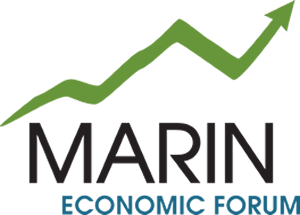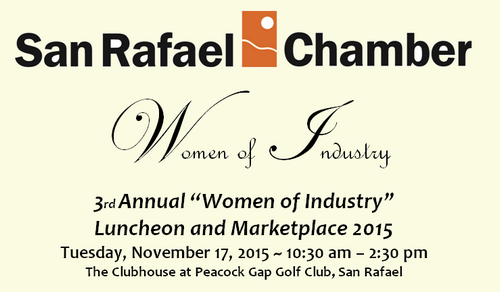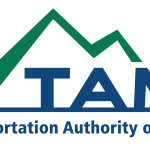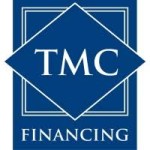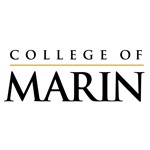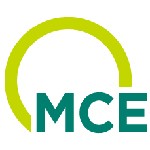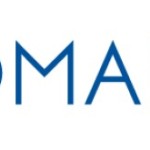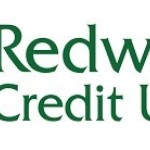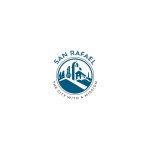MEF Newsletter 11-15
November 2015
 Marin’s Economy
Marin’s Economy
Happy November, everyone! As 2015 comes to a close, it’s a good time to look back at the economy in Marin County for 2015, and look forward to how our economy may evolve in the future. To that end, I would like to draw your attention to Marin Economic Forum’s 2015 Fall Economic Bulletin for Marin County, compiled by Dr. Robert Eyler, MEF’s Chief Economist. The Bulletin was presented by Dr. Eyler at this year’s Forecasting the Future Economic Conference, held October 29th 2015 in San Rafael, hosted by the San Rafael Chamber of Commerce and MEF. In addition to in-depth analysis of Marin County’s economy, the Economic Bulletin also includes reports on the California and US economies, which MEF has compiled with assistance from Dr. Jon Haveman of Marin Economic Consulting. While I won’t spoil the Economic Bulletin for you, and I encourage everyone to read it, you will be pleased to know that Marin remains one of the most vibrant economies in all of California. Employment growth continues, and Marin’s unemployment rate is the lowest in California, at 3.4 percent. Marin’s personal income level, per capita, also puts us at the top in California, higher than the next county by almost $20,000 per person! To read the full Economic Bulletin on our website, please go to this link.
Another report that has just been finalized and is of utmost importance to us at Marin Economic Forum and, I believe, to the entire County, is the Marin County Comprehensive Economic Development Strategy (CEDS). This document is a culmination of 18 months of work, with MEF engaging its partners, stakeholders and Marin residents to examine Marin County’s businesses and communities. The completed CEDS report provides a reference for economic conditions, strategies and projects from across Marin. We will be using this document heavily in 2016 in our work, including a review of our targeted industries for Marin. The CEDS report is also important in another way, in that we have submitted it to the US Economic Development Administration (EDA) for their review and “certification,” which will not only showcase Marin’s efforts in maintaining a robust economic ecosystem to a national audience, but also opens up the possibility of the County applying for EDA grants or even designation by the EDA as an Economic Development District (EDD). We are extremely pleased with how the CEDS report came out, and if you’d like to read it yourself, it can be found on our website here.
I hope everyone has a wonderful Thanksgiving. Come back next month when I will be reviewing Marin Economic Forum’s strategies for 2016.
 Nina H. Gardner, J.D.
Nina H. Gardner, J.D.
Partner & Executive Vice President
Filice Insurance Agency
Nina H. Gardner, J.D. is Partner and Executive Vice President with Filice Insurance Agency. In addition to being on the executive team, Nina is in charge of strategic benefit planning for her clients, relationship management and oversight of new client acquisition. Filice Insurance is a large full-service employee benefits consultancy, serving public and private companies and non-profits, ranging from early stage venture-backed startups to publicly traded companies with 5,000 employees. Filice has more than 2,200 clients in the Bay Area representing almost any industry and has offices in San Rafael, Moraga, Sacramento, San Jose and Irvine.
Nina has a background as an employment law attorney and worked for Littler as well as Sedgwick, both large national firms. She holds a B.A. in Comparative Literature and English Literature from U.C. Berkeley and a J.D. from Berkeley Law (Boalt Hall) at U.C. Berkeley.
In October of 2015, Nina made Employee Benefits Adviser’s list of 2015 Most Influential Women in Benefit Advising. Nina attributes her success to the strong, close relationships she has with her clients. She finds it results in her having a personal investment in the success of their benefit program and their level of satisfaction. http://bit.ly/1GfpkF2
Outside of work, Nina dedicates countless hours to her community and non-profit efforts. About 4 years ago, Nina Gardner, Pete Woodring with Cypress Partners and Franka Winchester with Pacific Crest Group founded Marin Business Forum which is a platform for education and collaboration for the Marin business community. They hold 4 annual events. About 1 1/2/ years ago, Marin Business Forum became Marin Economic Forum’s educational arm. www.marinbusinessforum.com
In 2014, Nina founded 100MARIN with 10 other companies. 100MARIN is a circle of like-minded, philanthropic individuals who are dedicated to enhancing support and awareness of Marin County nonprofits. In its first year, 100MARIN raised over $60,000 for local non-profits and is planning on expanding its reach in 2016. The next event will be held at the Buck Institute in Novato on March 10, 2016 from 6 pm to 8 pm. Please go to www.100MARIN.org to register. 100MARIN is now the philanthropic arm of Marin Economic Forum.
Outside of work and community involvement, Nina enjoys her time with her two children and has a passion for running, yoga, SUP, and mountain biking. Nina resides in Kentfield with her children.
You can reach Nina at nina@filice.com or 415-717-8583.

Discover West Marin Project
By Frank Borodic, Proprietor
The Inn at Roundstone Farms
It’s not unusual for visitors in West Marin to lose their way while trying to locate points of interest, public restrooms, gas stations and local visitor serving businesses. Visitors are more likely to return and relay to others the wonderful time they had while visiting the area, if they are able to find sites and resources which interest them; however, providing such visitor serving products as a business directory and map is a challenge for the small business community in West Marin. The last directory was printed five years ago and was only the second in 15 years.
Early in 2015, the West Marin Chamber of Commerce was approached by the Marin Renaissance Entrepreneur Center expressing interest in providing entrepreneurship training and support to the businesses of West Marin. After three months of meetings, it was agreed that a business directory/ map would have the greatest positive impact on the region. Two projects were launched: A business directory/map, and entrepreneur training to Spanish-speaking workers. These workers have been displaced following the closure of the Drakes Bay Oyster Farm; a project worked jointly with West Marin Community Services. Both projects were funded by a $30,000 Wells Fargo grant in support for rural businesses.
20,000 copies of the directory/map have been printed and are being distributed by members of the West Marin Chamber of Commerce and regional visitor centers.
The experience has shown that much more can be done in support of the small businesses of West Marin when organizations work together towards achieving a common goal.

Spotlighting the Best Marinnovations™ in Education
By Michael Leifer, CEO Guerilla PR / Ecodads
Spotlighting Marin-based Innovations in Education
One of the Bay Area’s fastest Ed-tech startups is the MV (Mill Valley) Code Club (http://www.mvcodeclub.com), a social venture founded by programmer and entrepreneur Doug Tarr.
Prior to founding the club, Doug had been up in Seattle working at a successful startup called PayScale (a Human Capital Platform) serving as the VP of Consumer Product and Chief Architect. As the company sold and Doug was transitioning to an Advisory role, he and his wife decided to move back to her home town of Mill Valley.
Cut to October in 2013, his son was 14 and on a local soccer team, and while practice was ending one day, several other parents (whose kids were all passionately interested in coding and MineCraft), encouraged Doug to teach the kids how to code. So, all of a sudden there were 12 kids sitting around his dining room table and he was teaching them to use a simple coding program called Scratch, as well as some Javascript. Eight weeks later, all 12 of those kids wanted to keep going. And, by that time, many other families had heard about his intimate Mill Valley Coding Club and the membership spiked from a dozen kids to 40. At that point, Doug’s wife told him he had to find a new space — LOL!
So, he rented a location in downtown Mill Valley with the intention of helping create a space for tweens and young teens vs high school kids, which would be safe, exciting and social, and would create a fun environment to learn how to code. His vision was to make MV Coders into a digital guild in which high school students could be paid staff and share their skills as journeyman, with the members being the apprentices, and where Doug and other coding professionals from Stanford, Google and other places would serve as the “sort of” masters.
Doug hired the high schoolers with the intention of keeping a balanced 4:1 apprentice to journeyman ratio so that each child could get the attention that they needed to succeed. Doug offered, “So much of our real estate and time is dedicated to sports, but so little is given to technology, and that so many kids love tech, games and robotics. These were the kids that ended to work at home with headphones on, away from their friends. I wanted to create a physical space for those kids who loved coding and tech, and wanted to be around other kids just like themselves, and also to have instructors guiding them shoulder to shoulder vs being the sage on the stage. This type of project-based learning of code enabled it to be driven by the students vs being dictated and broadcast at them from the teacher, which takes the fun out of it.”
Today, MV Code Club has expanded to 300 apprentice members, with 3 locations in Mill Valley, Greenbrae and San Francisco. Members can learn to program, develop a game, make a website, or build a robot. The club houses teach: Scratch for understanding the logic of coding using simple digital blocks; HTML5 and Javascript to learn how to create websites and user interfaces; Arduino to learn how to code to make robots; Java for backend database creation; Unity to make apps which can be sold in the Apple or Google Play Stores; Wix to quickly make websites from templates, and much more.
Doug’s larger plan is to have clubs in each town within Marin, so that members can walk to the local MV Code Club in their community vs having to get in a car. “We drive far too much in California and need to find ways of easing the stress on parents,” Doug stated with a thoughtful smile. The Club allows kids to learn with their friends, side by side, in collaboration, share together to build deeper more developed relationships vs just individually watching a screen and trying to learn on your own. In terms of expansion, the two of us discussed potentially having an office in one of the old 5th grade classrooms at the School Street location in Fairfax, which have 9 schools within walking distance.
MV Code Club also has been producing after-school programs at Mark Day and MPMS(Marin Primary Middle School) private middle schools within Marin. Last year, he also opened a SF location as here was such a demand from many schools for such an after-school coding program and is now working with Berkeley School, Finbar, SF Day and a few others.
The Club also provides members exclusive field trips into the large tech companies of SF such as IGN (San Francisco-based games and entertainment media company); so that members can, first hand, see and learn about the types of jobs and cultures that type of places have, igniting their curiosity and interest in what a future job in the tech industry might look like.
Now, MV Code Club is not a boys-only club. In terms of girls, the staff quickly realized that some girls learned and shared in a different manner than the young lads, so they decided to also offer girls-only sessions at the 3 locations. Girls seeing coding and technology as part of their identity at a young age is really important to help them succeed in our quickly evolving techno-communication world. They hope that they will grow up, and continue to pursue a passion for technology, and serve as role models for younger kid entering the tech field.
Many of the students are creating robots, and apps, which they are selling in the app store, building websites and much more. So, these projects also fuel their entrepreneurship zeal. Indeed, many students’ apps are selling on the Apple and Google App store already and several of the students have formed companies with their parents.
In grammar and middle-school, students learn math, reading and writing but they don’t learn how to code. In the coming year, MV Code Club will also be offering teacher-based professional development services, as many teachers have requested that they provide such.
Currently, MV Code Club is looking for Title local Marin Sponsors to fund membership scholarships for more kids to join and have the opportunity to learn this new language and to create pathways for entrepreneurship.

| November
|
December
|
